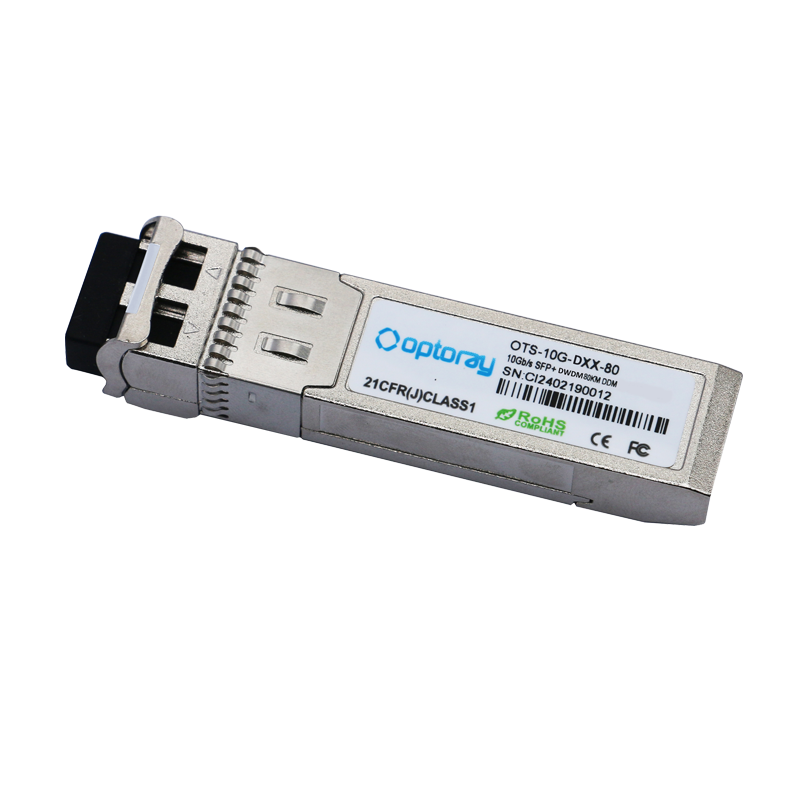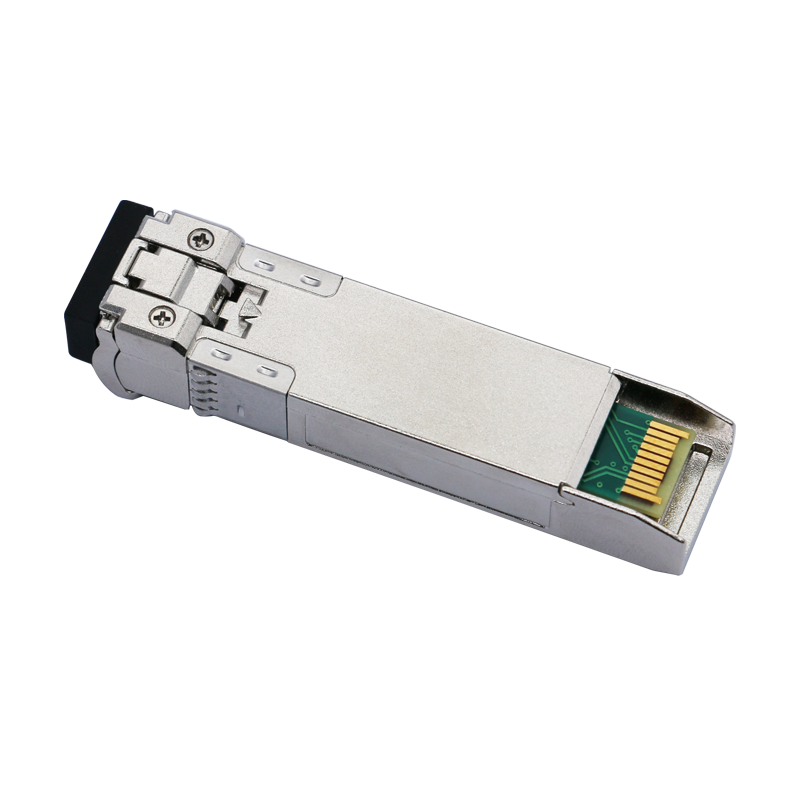10G SFP+ Optical Transceiver Industry knowledge
What is the working principle of 10G SFP+ optical module? How does it transfer data?
10G SFP+ optical module (Small Form-factor Pluggable Plus) is a high-speed optical fiber transmission device used to transmit data at a rate of 10Gbps (10 Gigabits per second). It is a hot-swappable module commonly used in network equipment such as switches, routers and servers to achieve high-speed data transmission.
working principle:
Photoelectric conversion:
Sender: When data is to be transmitted, the electrical signal from the sender is transmitted through the electrical interface in the 10G SFP+ optical module. Inside the module, electrical signals are converted into optical signals. This process is accomplished by a laser (or LED), which converts the electrical signal into light pulses, which represent the binary encoding of digital data. The optical signal is then transmitted to the fiber output port through the fiber coupler in the module.
Optical fiber transmission:
Once the light signal enters the fiber, it travels along the fiber. Optical fiber is a slender glass fiber made of high refractive index material, which allows optical signals to be transmitted along the optical fiber in a total reflection manner, reducing signal attenuation and distortion. The optical signal is transmitted to the receiving end through the optical fiber at the speed of light.
Photoelectric conversion:
Receiving end: After the optical signal reaches the receiving end, it enters the optical receiver in the 10G SFP+ optical module.
The optical receiver converts the optical signal back into an electrical signal. This process is similar to that on the transmitting end, but on the receiving end, the optical signal is detected and converted into an electrical signal that matches the original signal.
Ultimately, the electrical signal is output to a device at the receiving end, such as a switch, router, or server, for further processing and use.
Data processing and transmission: Once the data reaches the receiving end in the form of electrical signals, they can be received and processed by the target device. This may involve demodulation, shaping and other processing steps to ensure data integrity and correctness.
Laser transmits signals: At the transmitting end, the electrical signals are processed and then transmitted to the laser in the optical module. Lasers convert electrical signals into optical signals, called laser pulses. These optical signals are transmitted to the receiving end through optical fibers.
Optical fiber transmission: Optical signals are transmitted to the receiving end through optical fibers. Optical fiber is a slender glass fiber with a high refractive index that can effectively transmit optical signals and reduce signal attenuation and distortion.
The optical receiver receives the signal: At the receiving end, the optical signal reaches the optical receiver in the optical module. The optical receiver converts the optical signal back into an electrical signal, i.e., restores the original data signal.
Data processing: The received electrical signal is further processed, including steps such as demodulation and shaping, to ensure the accuracy and integrity of the data.
data transmission:
The 10G SFP+ optical module transmits data through optical fiber, and its transmission rate can reach 10Gbps, which means it can transmit 1 billion bits per second. This high-speed transmission makes it widely used in scenarios that require large bandwidth and high-speed connections, such as data centers, cloud computing, video streaming and other fields.
What are the application scenarios of 10G SFP+ optical modules in data center networks?
10G SFP+ optical modules have a wide range of application scenarios in data center networks. The following will introduce several aspects:
Server connection:
The 10G SFP+ optical module provides a transmission rate of up to 10Gbps and is suitable for application scenarios that require large amounts of data transmission. Through this high-speed connection, servers in the data center can quickly share resources, transfer data, and support the operation of high-performance applications. Data center applications are very sensitive to latency, especially in application scenarios that require fast response, such as financial transactions, online games, etc. The 10G SFP+ optical module realizes data transmission through optical fiber transmission and has low transmission delay, which can meet the demand for low latency. 10G SFP+ optical modules have a smaller physical size, giving them flexibility in server connections. Servers often have limited space, and the small design of SFP+ optical modules allows them to easily fit into the port configurations of various servers and network equipment. Servers in a data center may be distributed in different racks or computer rooms and require span connections to communicate with each other. 10G SFP+ optical modules can achieve long-distance connections through optical fiber transmission, making high-speed connections between long-distance servers possible.
Storage network connection:
Storage systems in data centers usually require high-bandwidth, low-latency network connections to enable fast data reading, writing, and storage operations. 10G SFP+ optical modules can be used to connect storage devices, such as connecting storage servers to storage arrays, storage switches, etc., to achieve high-speed and stable data transmission through optical fiber transmission.
Network aggregation:
Data center networks usually use network aggregation technology to aggregate multiple network links into a high-bandwidth, high-availability network link. 10G SFP+ optical modules can be used to connect network aggregation devices, such as connecting switches and core routers, connecting transmission links between different data centers, etc., to achieve high-speed data aggregation and transmission through optical fiber transmission.
Virtualized environment:
In a virtualized environment, multiple virtual machines may need to access storage resources or be interconnected at the same time, requiring high-speed network connections to support data transmission and communication between virtual machines. 10G SFP+ optical modules can be used to connect communications between servers and switches in virtualized environments, providing high-bandwidth, low-latency network connections for virtual machines.
High performance computing:
When performing high-performance computing tasks such as scientific computing and big data analysis, a large amount of data transmission and computing resources are required. 10G SFP+ optical modules can be used to connect communications between servers and switches in high-performance computing clusters to achieve high-speed data transmission and distributed processing of computing tasks.
The application scenarios of 10G SFP+ optical modules in data center networks mainly include server connection, storage network connection, network aggregation, virtualization environment and high-performance computing. It provides high-speed and stable network transmission capabilities for data centers and meets various needs. requirements in different application scenarios.



 English
English русский
русский



































